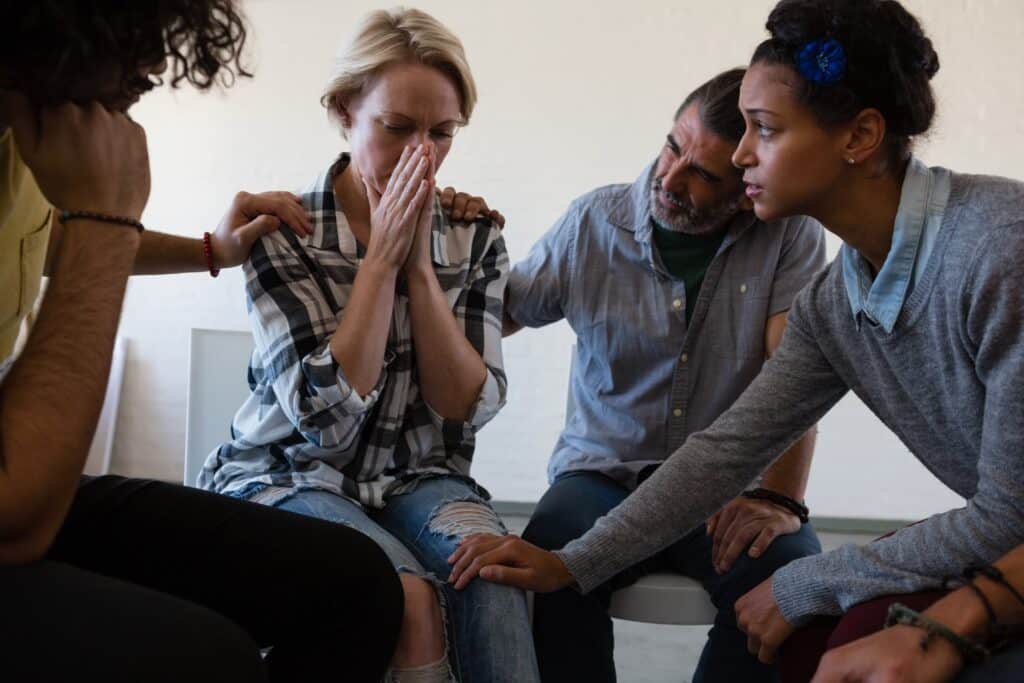Therapy For Anxiety: 5 Options You Can Try
Published on November 29, 2022 – Last Updated on November 29, 2022
Anxiety is a mental health condition that makes it challenging to get through the day. If you’re anxious, your response to particular objects and situations is filled with dread and fear. Not just that, you may also experience physical symptoms, such as sweating and heart pounding.
It’s usually normal for most people to experience anxiety. In fact, it’s considered beneficial for some. For example, anxiety may help people concentrate more on their actions to achieve the best results they need.
Besides, anxiety can help people notice situations that may cause more harm than good and focus their attention, making them safe. But of course, these benefits don’t mean relying on anxiety, nor it’s good for humans.
Fortunately, anxiety disorders can now be treated using a wide range of therapeutic approaches. These therapies can help address different types of anxiety disorders, such as panic disorder, phobias, social anxiety disorder (SAD), and post-traumatic stress disorder (PTSD).
The main goal of the following therapies is to help people understand their feelings, emotions, triggers, and responses. So, what are these therapies, anyway? Read on to learn more.
- Past Life Regression Hypnosis
Past life regression hypnosis helps people overcome anxiety by connecting to their past. During the session, your therapist will put you in a deep meditative state in a reclining position with the help of relaxation techniques. The main principle behind this therapy is going back in time to find helpful information that can improve your current situation.
People who can benefit from past life regression therapy are those with unexplainable traumas (e.g., trauma after giving birth and other pregnancy issues). And it can help people who perceive themselves as someone with bad luck and no idea what to do with their life.
- Cognitive Behavioral Therapy
Cognitive behavioral therapy (CBT) is one of the most popular forms of psychotherapy that can help address anxiety disorders and other mental health conditions. These include major depressive disorder, eating disorders, schizophrenia, and addictive behaviors.
CBT focuses on helping people with anxiety disorder identify negative thought patterns and ineffective actions and replace them with positive and realistic ones. It helps them to learn strategies and mechanisms that allow them to cope with anxiety symptoms as well.
In a CBT session, your therapist acts as a coach teaching you some helpful life techniques. For instance, you’ll be asked to do black-and-white thinking. This assumes that all things are either good or bad. Then, you’ll be asked to replace that thinking with a thought that there are more grey patterns in between.
Such techniques may require a lot of practice. Once you master them, it’ll be easy for you to recognize your anxiety as well as the triggers that induce its symptoms. Additionally, you’re now ready to use all the coping mechanisms to deal with your fear, dread, and panic.

- Exposure Therapy
Exposure therapy (ET) is another popular form of psychotherapy used to treat anxiety. The main principle behind this approach can be found in its namesake: to expose people with anxiety to the object or situation that makes them feel worried, fearful, and dreadful.
For example, if you have a phobia about heights, the best way to conquer it is to fight it head-on. You may participate in activities that make you face your fear of heights, such as bungee jumping, ziplining, rappelling, sky diving, and more.
During ET, your therapist will introduce you to objects or situations that make you anxious. This is usually performed using a method called ‘systematic desensitization.’ This method involves three simple steps:
- Relaxation: In this step, your therapist will help you undergo deep relaxation to fight your anxiety. Some techniques used in this step include meditation, mindfulness, guided imagery, and progressive muscle relaxation.
- List Creation: In this step, you’re tasked to create a list of all the things that may provoke your anxiety. Then, you’ll need to rank them based on their ability to induce your anxiety symptoms.
- Exposure: In this step, you’ll go over the list you created in step two and apply the relaxation techniques you learned in step one.
Exposure can be done in many ways. Your therapist may ask you to do at least one of the following techniques, such as:
- In Vivo Exposure (IVE): In this technique, you’ll be asked to face the things or situations that provoke your anxiety. For example, if you have social anxiety, your therapist will ask you to deliver a speech in front of many people to combat your anxiety.
- Virtual Reality Exposure (VRE): If you can’t proceed with IVE, your therapist may ask you to undergo virtual reality exposure. This technique uses virtual reality technology to expose you to your fears, making it effective in treating PTSD.
- Imaginal Exposure: This type of exposure asks you to imagine the thing or situation that triggers your anxiety.
If you want to know more about other exposure techniques, you may ask your nearest rehabilitation facility or psychologist for help and guidance.
- Dialectical Behavior Therapy
Dialectical behavior therapy (DBT) is one of the types of CBT that have been proven effective in treating anxiety disorders and other mental health conditions. Nonetheless, it was originally developed to treat personality disorders, particularly borderline personality disorder (BPD).
DBT aims to help people with anxiety develop a dialectical outlook and change, meaning an opposite view and transformation in life. In this approach, your therapist will ask you to accept your anxiety while working on ways that can help you replace it.
Furthermore, DBT focuses on these highly effective skills:
- Emotion Management: This skill aims to help you regulate your emotions before they go out of control.
- Distress Tolerance: This skill helps you manage your symptoms when you encounter an anxiety-triggering situation.
- Mindfulness Meditation: This skill helps you connect with the present and notice the flow of anxiety without being overcome by such emotions.
- Interpersonal Effectiveness: This skill teaches you how to say ‘no’ to people that ask you to participate in anxiety-provoking situations.
You may ask your psychologist to learn more about how DBT can help you overcome your anxiety and if this is the ideal therapy for your condition.
- Interpersonal Therapy
Interpersonal Therapy (IPT) is one of the popular forms of psychotherapy that aims to relieve anxiety symptoms by helping people with anxiety engage in interpersonal events. In addition, it aims to address current issues and relationships instead of developmental ones (related to childhood growth and development).
The main principle behind IPT is based on the idea that symptoms can be addressed by improving day-to-day relationships with others. IPT focuses on four core areas:
- Changes in life;
- Loss and grief;
- Challenges in maintaining a relationship;
- Conflicts in a relationship; and so on.
When you learn some interpersonal techniques, your anxiety symptoms may improve.
Final Words
Anxiety makes people afraid of situations or objects that have something to do with their past experiences. Fortunately, it can be treated with the help of various therapeutic approaches, such as hypnosis, CBT, DBT, IPT, and ET. If you’re struggling with your anxiety, don’t hesitate to seek professional help. You may visit a mental health recovery facility or a therapy center for treatment.




